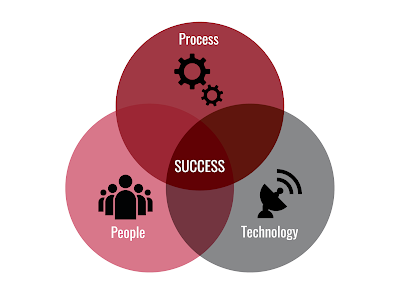Cybersecurity in 2025: Navigating a Rapidly Evolving Threat Landscape
- Olawale Komolafe
- Jan 22
- 2 min read
As we step into 2025, cybersecurity continues to dominate conversations across industries. With technological advancements accelerating digital transformation, organizations must also grapple with an ever-expanding and increasingly sophisticated threat landscape. Here’s what you need to know about cybersecurity trends, challenges, and strategies in 2025.
Emerging Cyber Threats in 2025

The cybercriminals of 2025 are more innovative than ever, exploiting new technologies to launch highly targeted attacks. Key trends include:
AI-Driven Cyber Attacks: Malicious actors now use AI to automate attacks, evade detection, and exploit vulnerabilities at unprecedented speeds.
Deepfake Fraud: Manipulated media is being used for corporate espionage, fraud, and disinformation campaigns, posing a significant threat to businesses and governments alike.
IoT Exploits: With billions of IoT devices in operation, attacks on smart devices have become a primary target, exposing critical vulnerabilities in supply chains and infrastructure.
Quantum Computing Risks: As quantum technology advances, traditional encryption methods may become obsolete, pressuring organizations to explore quantum-resistant algorithms.
Cybersecurity Trends and Innovations
Zero Trust Adoption: Organizations are embracing the "never trust, always verify" approach, implementing zero-trust architectures to secure access at every level.
Cybersecurity Mesh Architecture (CSMA): This modular approach enables organizations to integrate security tools into a unified framework, improving visibility and control.
Behavioral Biometrics: By analyzing user behavior, businesses can add an additional layer of authentication to detect and mitigate threats in real-time.
Regulatory Alignment: Governments worldwide are introducing stricter compliance standards to address growing cybersecurity risks, with penalties for non-compliance becoming more severe.
The Role of AI in Cyber Defense
While AI has empowered attackers, it also plays a critical role in defending against threats. AI-driven cybersecurity tools are enabling organizations to:
Detect anomalies faster by analyzing massive datasets.
Automate threat hunting and incident response processes.
Predict potential vulnerabilities and proactively secure systems.
However, balancing AI adoption with ethical considerations and privacy protections will be crucial.
Key Strategies for Organizations in 2025
Invest in Talent: With a global shortage of cybersecurity professionals, organizations must prioritize training and retaining skilled talent.
Continuous Risk Assessment: Regular assessments and red-teaming exercises can help identify vulnerabilities before attackers do.
Enhance Incident Response Plans: Having a robust, regularly tested incident response plan is non-negotiable in today’s threat landscape.
Prioritize Third-Party Security: Vendors and partners can be weak links; monitoring and enforcing supply chain security is vital.
Foster a Security-First Culture: Employees are often the first line of defense; regular training and awareness programs are essential.
The Road Ahead
2025 promises continued advancements in technology and cyber defense, but the stakes have never been higher. As businesses strive to innovate, they must also prioritize resilience and trust. At Gosu Technology, we are committed to empowering organizations with the tools and expertise they need to thrive in this dynamic environment.
Together, let’s make cybersecurity a strategic advantage in the years ahead.
What cybersecurity trends are you watching closely in 2025? Share your thoughts in the comments or reach out to us for a deeper conversation.




Comments